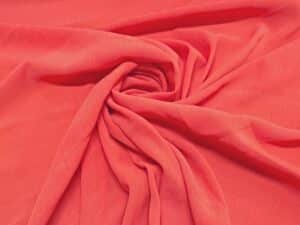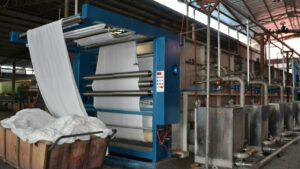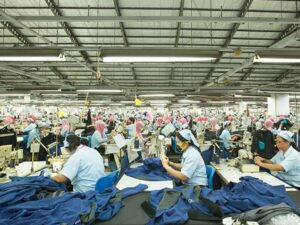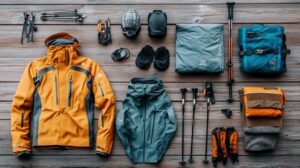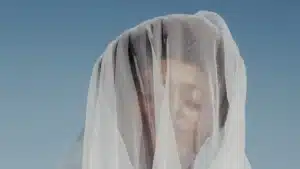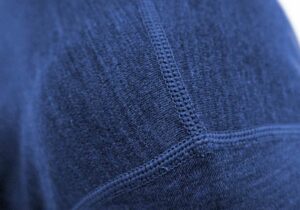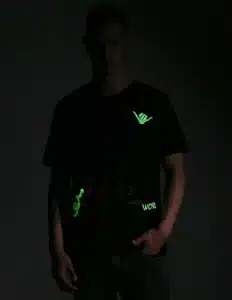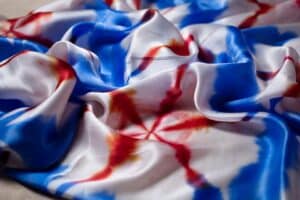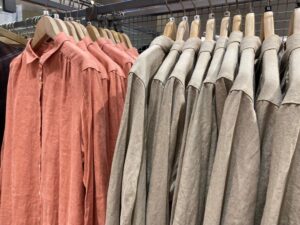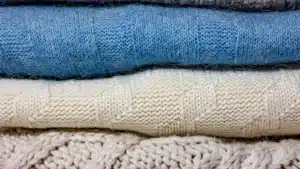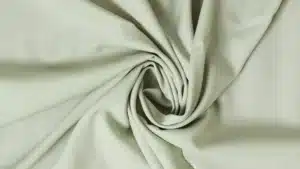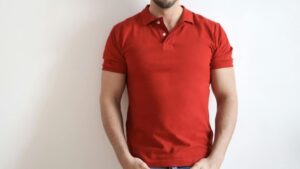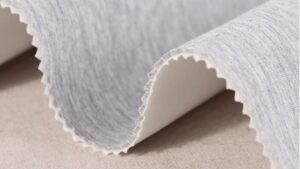When it comes to clothing manufacturing, the type of fabric weave plays a crucial role in determining the look, feel, and performance of the final product.
Whether you’re designing durable outdoor gear, stylish casual wear, or high-performance activewear, understanding the differences between plain weave, twill weave, and ripstop weave can help you choose the right fabric for your needs.
For instance, plain weave is stronger than twill in both directions. Twill, however, resists tearing better with double weft yarns. These differences show why picking the right weave is key. If you want strong, breathable, or tear-resistant fabric.
Key Takeaways
-
Plain weave has a basic crisscross pattern. It is strong and useful for clothes and home items.
-
Twill weave shows a slanted design. It is flexible and tough, great for jeans, jackets, and work clothes.
-
Ripstop fabric has a square grid design. It stops small rips from getting bigger, perfect for tents and backpacks.
-
Pick the right fabric based on your needs: plain for strength, twill for looks, and ripstop to stop tears.
What Are Fabric Weaves?

Fabric weaves refer to the way threads are interlaced to create a textile. The weave pattern affects the fabric’s strength, texture, drape, and durability. The 3 most common weaves used in clothing manufacturing are:
- Plain Weave
- Twill Weave
- Ripstop Weave
Each weave has its own characteristics, making it suitable for specific types of clothing and applications.
Plain Weave: Simple and Versatile

Plain weave is the most basic and common type of fabric weave. It is created by interlacing warp (vertical) and weft (horizontal) threads in an alternating pattern, forming a simple crisscross design.
Structure
Plain weave is made with a basic criss-cross design. The warp and weft threads meet at right angles. This simple pattern creates a strong and even fabric. Its strength comes from evenly spread threads. The fabric feels firm and keeps its shape well. Changing the yarn type or thread tightness can alter its features. For example:
-
Tighter threads let more air through and transfer heat better.
-
Thicker weft threads keep heat in and insulate well.
This flexibility makes plain weave useful for many purposes.
Characteristics
Plain weave is known for being strong and long-lasting. Its checkerboard-like design gives it a timeless style. The fabric feels smooth, light, and comfy for daily wear. Its tight weave resists damage, so it lasts a long time. It also takes dye and prints well, making bright patterns possible. Whether you need breathable or tough fabric, plain weave works great.
- Durability: Strong and resistant to wear and tear.
- Breathability: Allows air to pass through, making it comfortable for warm weather.
- Smooth Texture: Has a flat, even surface.
- Lightweight: Ideal for lightweight fabrics like cotton and linen.
Common Uses
Plain weave is used in many different ways. In clothing, it’s found in shirts, dresses, and casual outfits. For homes, it’s used in curtains, tablecloths, and bedding. Its strength makes it good for industrial items like filters and conveyor belts. In cars, it’s used in seat belts and airbags. Its low cost and usefulness make it popular in many fields.
- Casual Wear: T-shirts, blouses, and dresses.
- Bedding and Linens: Sheets, pillowcases, and tablecloths.
- Lightweight Outerwear: Summer jackets and shirts.
Here’s a quick look at its uses:
| Industry/Application | Description |
|---|---|
| Apparel | Popular for clothes due to trends and needs. |
| Home Textiles | Used in home items like curtains and furniture covers. |
| Industrial Applications | Found in filters and protective gear. |
| Automotive | Important for safety items like seat belts and airbags. |
| Fashion | Easy to dye and print, staying trendy. |
Plain weave’s simple design and dependability make it a key fabric choice.
Twill Weave: Durable and Distinctive

Twill weave is characterized by its diagonal rib pattern, created by passing the weft thread over one or more warp threads and then under two or more warp threads. This staggered pattern gives twill fabrics their distinctive texture and durability.
Structure
Twill weave is easy to spot with its slanted lines. These diagonal patterns are made by shifting the warp threads. This gives twill a special look and feel. It has more threads packed together than plain weave, making it thicker and tougher. The slanted lines can go left (Z-twill) or right (S-twill).
Characteristics
Twill fabric is strong and bends easily. Its slanted weave helps it resist wrinkles, keeping it neat for longer. The tight weave makes it hard to tear, so it lasts a long time. Twill also soaks up dye well, making bright colors stand out.
Another great thing about twill is it hides stains. The diagonal lines make dirt less noticeable, which is handy for daily use. Over time, twill gets softer and more comfortable to wear.
- Strength: Highly durable and resistant to wrinkles and tears.
- Softness: Softer and more flexible than plain weave.
- Drape: Falls smoothly, making it ideal for tailored garments.
- Texture: Diagonal lines add visual interest and texture.
Common Uses
Twill’s slanted weave, toughness, and ability to hide stains make it a favorite. Whether for work clothes or home décor, twill is a smart choice.
Twill is used in many ways because it’s so useful:
- Fashion: Great for jeans, jackets, and pants because it’s tough and stylish.
- Home Furnishings: Works well for curtains, couches, and bedding, mixing strength with beauty.
- Industrial Use: Perfect for uniforms and gear that need to handle rough use.
- Medical Textiles: Used in bandages and scrubs since it absorbs well and breathes.
- Everyday Items: Found in bags, furniture covers, and other handy products.
- Denim: Jeans, jackets, and skirts.
- Workwear: Durable pants and uniforms.
- Tailored Clothing: Suits, trousers, and blazers.
Ripstop Weave: Lightweight and Tear-Resistant

Ripstop weave is a specialized ripstop fabric weave designed to prevent tears and rips. It is created by weaving thicker reinforcement threads at regular intervals, forming a grid-like pattern that stops tears from spreading.
Structure
Ripstop fabric is easy to recognize by its grid pattern. This pattern is made by weaving thicker threads into a lighter base. The thicker threads, often nylon or polyester, make the fabric stronger. These threads form a grid that stops small tears from growing. The threads are spaced 5 to 8 millimeters apart. This design makes the fabric tough and hard to tear. Ripstop fabric is great for heavy-duty uses because of its strength.
Characteristics
Ripstop fabric is light but very strong. Its grid design makes it hard to tear or wear out. It dries fast and lets air through, so it’s good for outdoor use. The thick threads make it stronger and stop damage from spreading. Ripstop fabric works well in tough conditions and lasts a long time. It’s also flexible, making it useful and comfortable in many situations.
- Tear Resistance: Reinforced threads prevent small tears from becoming larger rips.
- Lightweight: Strong yet lightweight, making it ideal for outdoor gear.
- Weather Resistance: Often treated to be waterproof or windproof.
- Durability: Resistant to abrasion and wear.
Common Uses
Ripstop fabric is used for outdoor gear because it’s strong and tear-proof. It’s found in backpacks, tents, and sleeping bags for safety and comfort. Military uniforms and tactical gear also use ripstop for its toughness. Parachutes and kites rely on it because it’s light and tear-resistant. It’s also used in sails, luggage, and jackets, where it handles rough use. Ripstop fabric is a favorite for outdoor lovers and professionals because it’s durable and versatile.
- Outdoor Gear: Jackets, pants, and tents.
- Sportswear: Lightweight and durable activewear.
- Military and Tactical Wear: Uniforms and protective gear.
Comparing Plain Weave, Twill Weave, and Ripstop Weave
Differences in Structure
Each fabric weave has a special design that affects how it works. Plain weave has a simple crisscross pattern where threads meet at right angles. This tight design makes it strong and useful for many things. Twill weave has slanted lines made by threads crossing over and under several others. This gives it a unique texture and makes it more flexible. Ripstop is different with its grid pattern, using thicker threads in a lighter base. This grid makes it very strong and stops tears from spreading, perfect for tough uses.
Differences in Characteristics
These weaves have different strengths and features. Plain weave is strong and resists wear but tears more easily, with a tear strength of about 13N. Twill weave is less stiff and resists tearing better, with tear strength between 19N and 30N. Ripstop is the best at stopping tears because of its grid design, though its exact strength depends on the material. Plain weave feels smooth and firm, while twill is softer and hides stains well. Ripstop is light, airy, and dries quickly, making it great for outdoor use.
| Property | Plain Weave | Twill Weave | Ripstop Weave |
|---|---|---|---|
| Durability | Moderate | High | Very high |
| Structural Design | Crisscross pattern | Diagonal ribs | Reinforced grid pattern |
| Texture | Smooth, flat | Textured, rugged | Grid-like pattern and sturdy |
| Weight | Lightweight to medium | Medium to heavy | Lightweight to medium |
| Breathability | High | Moderate | Moderate to high |
Differences in Common Uses
The uses of these weaves match their special features. Plain weave is often used in home items like bed sheets, curtains, and furniture covers because it’s strong and versatile. Twill weave is common in jeans, work clothes, and furniture because it’s tough and flexible. Ripstop is best for outdoor gear like backpacks, tents, and military uniforms since it’s light and tear-proof.
| Fabric Type | Common Uses | Market Area |
|---|---|---|
| Plain Weave | Bed sheets, curtains, furniture | Home |
| Twill | Jeans, work clothes, furniture | Commercial |
| Ripstop | Backpacks, tents, military uniforms | Outdoor/Industrial |
Knowing these differences helps you pick the right fabric. Whether you need strength, flexibility, or tear resistance, there’s a weave for you.
Each fabric weave has special benefits for different uses. Plain weave is light and airy with a smooth texture. It works well for daily items and strong work clothes. Twill is tough and has a textured look, great for casual outfits and workwear. Ripstop is best for stopping tears, making it perfect for outdoor and heavy-duty gear.
Studies show that factors like thread count and fabric weight affect strength. Twill is chosen for higher pull strength, while plain weave lasts longer by resisting wear.
Think about what you need: strength, style, or purpose. Use this table to help decide:
| Fabric Weave | Strength | Look | Best Use |
|---|---|---|---|
| Plain | Strong | Smooth and simple | Daily items, work clothes |
| Twill | Durable | Textured and rugged | Casual wear, neat outfits |
| Ripstop | Very strong | Grid-like and sturdy | Outdoor gear, tough tasks |
Knowing each weave’s strengths helps you pick the right fabric.
FAQ
What is the main difference between plain weave, twill, and ripstop?
Plain weave has a simple crisscross design, making it strong. Twill has slanted lines, which make it tough and bendable. Ripstop has a grid pattern with thick threads, stopping tears. It’s great for outdoor gear.
What makes ripstop fabric suitable for outdoor gear?
Ripstop fabric’s grid stops small tears from growing bigger. It’s light, strong, and lasts long. This makes it perfect for backpacks, tents, and jackets used outdoors.
What types of clothing commonly use twill weave?
Twill weave is used in jeans, jackets, and work clothes. Its slanted texture looks stylish and feels comfy. It’s strong, so it works well for casual and work outfits.
What are the advantages of plain weave for home textiles?
Plain weave is strong, smooth, and lets air through. It’s great for sheets, curtains, and tablecloths. It holds colors and patterns well, making it good for decorating homes.
What should you consider when choosing a fabric weave?
Think about what you need. For strength, pick plain weave. For toughness and style, choose twill. For tear-proof outdoor gear, ripstop is best. Match the weave to its use.


